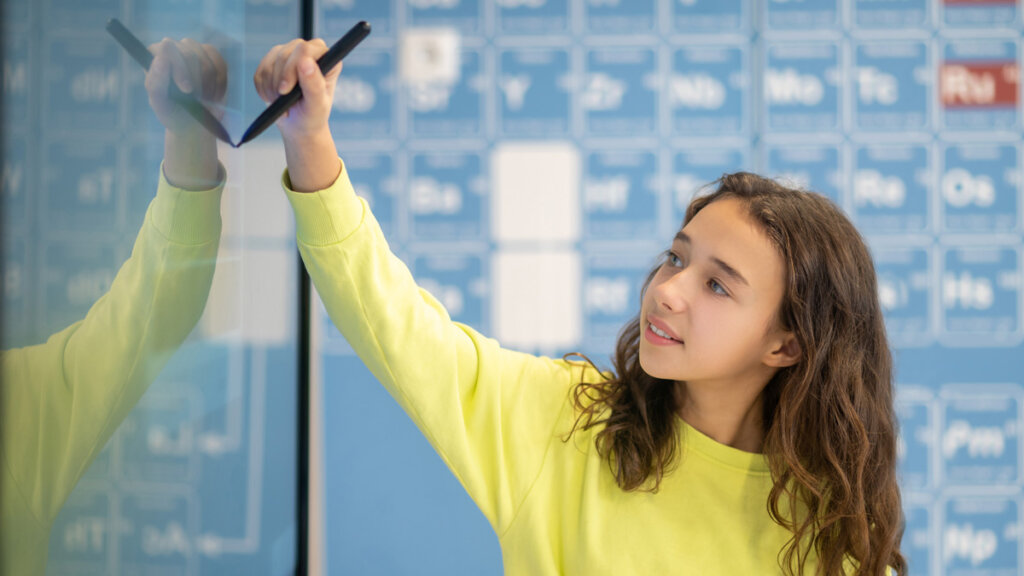Terms like Flipped Classroom, Project Based Learning or Gamification, among others, are already part of the essential lexicon of 21st century teachers. You can learn more about the triumph of active methodologies in the classroom in this article.
Technology applied to education is an increasingly essential tool to help teachers in the development of their learning models. Also, it is widely used as a means to connect better with your students.
In an increasingly fast world, constantly changing and progressively more demanding, the future professional or academic success of any student will depend, as perhaps in any previous period of history, on their ability to acquire emotional intelligence, the ability to Collaborate with colleagues from different profiles and manage complex problems.
Active learning methodologies that directly involve students in the teaching process have a significant impact on their knowledge acquisition.
Several recent surveys carried out in multiple countries make this clear: the level of involvement of students and their academic performance increase significantly when technology is present in the classroom.
Likewise, the use of active methodologies in the classroom is an important factor in the acquisition of knowledge. This is because students are directly involved in the learning process, with greater prominence and decision-making when choosing the way in which curricular content is taught.
The growing popularity of PBL
Of all the methodologies that have made their way into class in recent years, Project Based Learning (ABP) is perhaps the one that has gained the most popularity. This is due, in principle, to its flexibility and disciplinary complementarity.
But also because it is a methodology that has the capacity to cover several others at the same time. Its only limit, in reality, ends up being the imagination of the teacher. And, ultimately, the creativity and ability to work in groups that students demonstrate.
In this way, with this methodology, fundamental competencies such as information search, analysis and synthesis of the collected material can be acquired in class. Also, the debate of ideas and the development of communication techniques, which can become decisive in a future profeassional setting.
Aware of the importance of this new educational trend, BlinkLearning has developed a specific tool for the creation of Projects with which it is very easy to assemble an ABP work for students, regardless of the temporary duration of the project or the depth of the chosen theme.
Following the structural model most used by teachers, Blink’s tool seeks to facilitate teachers the implementation of ABP in their classes.
The acquisition of emotional intelligence, the ability to collaborate with peers from different profiles and manage complex problems will dictate the future professional or academic success of any student.
Among the various features available in this tool are the creation of sessions or adding resources of different types (text, audio, video, images, etc.). Another novelty is a messaging service that allows members of each group to communicate with each other and with the teacher.
The 5 C’s
Joe Ruhl is an experienced professor of American biology who, after years of teaching, radically changed his teaching method. He highlighted a series of characteristics that he found essential for cognitive development and to boost the motivation of his students in class.
This approach, which he called “The 5 C’s”, is replicated today in hundreds of schools around the world. The central element in this method remains the personalization of teaching, but in a different way.
If a couple of decades ago there was a consensus among experts about the weaknesses of a standardized, formatted and identical system for all students, today the process of transition to another teaching model has begun slowly. A more personalized model that, in addition to taking into account the specific characteristics of each student when preparing a learning itinerary, defends that students provide their opinion on the way they want to learn.
It is not in any case to transfer to the students the responsibility of choosing curricula, order or teaching metrics. It will always be the educators who lead the process and choose, with their experience, what they think works best. It is, however, to listen to students carefully before identifying their singularities and grouping them accordingly.
It is also in this sense that PBL grows in relevance in classrooms all over the world.
Generally, this methodology is divided into three clear phases. It contemplates a first stage of investigation and planning, a second stage of development of the final product and, finally, a third one of exhibition and evaluation. Although the teacher is always present throughout the entire project, the intention is for students to seek and achieve autonomy in their individual and collective tasks.
Project Based Learning is a methodology that really prepares students for the future, whether in an academic or work environment.
As a result of interdisciplinarity and the scope of competencies it provides, ABP is not only one of the most complete active methodologies but the one that is most attractive to students. In addition, it has verified benefits on academic performance and intellectual development.
What do you think about these tools? Do you usually use any of these active methodologies in the classroom?


